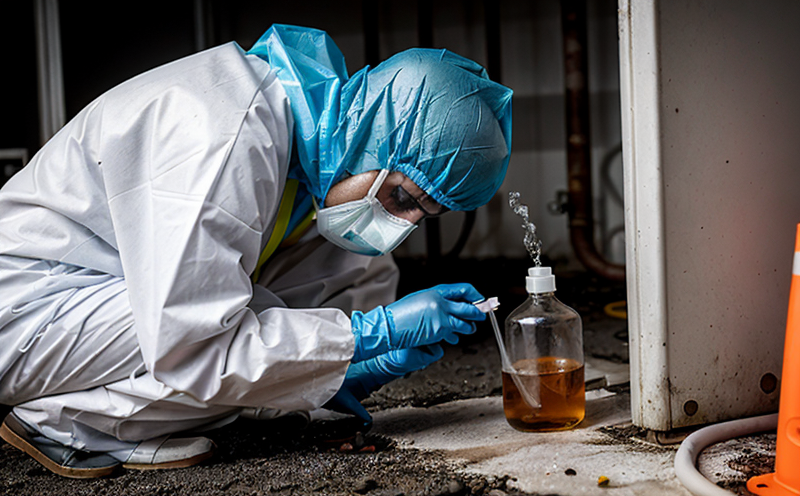ASTM E1479 Determination of Oxygen and Nitrogen in Titanium Powders
The ASTM E1479 standard is a critical method used to determine the oxygen (O2) and nitrogen (N2) content in titanium powders. This testing ensures that additive manufacturing processes, such as laser melting or electron beam melting, are carried out with consistent material properties. Consistency in these parameters is essential for reliable part performance and longevity.
Titanium powders are used extensively in the aerospace, automotive, and medical sectors due to their exceptional strength-to-weight ratio, corrosion resistance, and biocompatibility. The oxygen and nitrogen content can significantly affect the quality of the final product by influencing the microstructure formation during additive manufacturing processes like laser powder bed fusion (LPBF) or electron beam melting (EBM).
ASTM E1479 provides a standardized approach to measure these elements using gas analyzers, which are sensitive enough to detect even trace amounts of oxygen and nitrogen. This testing is typically performed on small samples of the titanium powder before it undergoes additive manufacturing processes.
The process involves heating the sample in an inert atmosphere to decompose any bound oxygen or nitrogen into gases that can be quantified by a gas analyzer. The accuracy and precision of this method are paramount, as even slight variations in oxygen or nitrogen content can lead to significant changes in the mechanical properties of the final product.
The ASTM E1479 standard is particularly important for industries that rely on precise control over material composition. For example, in aerospace applications, where part failure could result in catastrophic consequences, ensuring that the titanium powder meets stringent oxygen and nitrogen content limits is crucial.
Additionally, this testing helps to verify compliance with specific industry standards and regulations, ensuring that manufacturers are delivering products that meet quality control benchmarks. This is especially important for additive manufacturing processes where material consistency is key to achieving the desired performance characteristics of the final product.
The ASTM E1479 method also plays a role in process optimization. By monitoring oxygen and nitrogen content during production, manufacturers can identify trends or anomalies that may indicate issues with the powder quality or processing conditions. This allows for timely adjustments to ensure optimal results.
Why It Matters
The accurate determination of oxygen and nitrogen in titanium powders is critical for several reasons, particularly within the additive manufacturing sector. Oxygen and nitrogen are considered "contaminants" because they can react with the titanium during processing, leading to undesirable effects such as porosity or increased brittleness.
Controlling these elements ensures that the final product meets stringent quality standards and performs reliably under various conditions. For instance, in aerospace applications, where parts must withstand extreme temperatures and stresses, even small amounts of oxygen or nitrogen can lead to reduced mechanical properties.
The ASTM E1479 method provides a reliable means for manufacturers to verify that their titanium powders are free from excessive levels of these elements. This testing is particularly important for processes like laser powder bed fusion (LPBF) and electron beam melting (EBM), where the microstructure development during processing can be significantly influenced by the initial oxygen and nitrogen content.
By ensuring that the titanium powders meet the specified limits, manufacturers can improve the overall quality of their products. This not only enhances performance but also extends the service life of parts used in critical applications such as aircraft engines or medical implants.
Furthermore, compliance with ASTM E1479 helps companies to maintain a good reputation and trust among customers who rely on consistent product quality. In an increasingly competitive market, meeting rigorous testing standards can be a significant differentiator for manufacturers aiming to stay ahead of the curve.
Applied Standards
| Standard | Description |
|---|---|
| ASTM E1479 | Standard practice for the determination of oxygen and nitrogen in titanium powders by gas analysis. |
Scope and Methodology
The ASTM E1479 standard is designed to ensure that the oxygen and nitrogen content in titanium powders meets specific limits, which are critical for additive manufacturing processes. The method involves heating a sample of the powder under controlled conditions to decompose any bound oxygen or nitrogen into gases.
During this process, the sample is heated in an inert atmosphere, typically argon (Ar), to prevent unwanted reactions with the titanium during decomposition. Once the decomposition has occurred, the resulting gases are analyzed using a gas analyzer capable of detecting trace amounts of O2 and N2. The precision and accuracy of this method depend heavily on the quality of the equipment used and the expertise of the personnel performing the test.
The ASTM E1479 standard specifies that the oxygen content should not exceed 0.3% by weight, while nitrogen content should be less than 50 ppm (parts per million). These limits are critical because higher levels can lead to issues such as increased porosity in parts or reduced mechanical properties.
The testing process begins with careful sampling of the titanium powder. The sample must be representative of the entire batch, ensuring that it accurately reflects the oxygen and nitrogen content across all areas of the powder bed. Once sampled, the powder is heated to a specified temperature for a set period, allowing the bound gases to escape.
The resulting gas mixture is then analyzed using an optical emission spectrometer (OES) or similar instrument capable of detecting trace amounts of O2 and N2. The results are compared against the specified limits in ASTM E1479 to determine whether the sample meets the required standards.
The precision and accuracy of this method depend on several factors, including the quality of the gas analyzer used, the temperature and timing of the heating process, and the skill level of the personnel performing the test. Proper calibration of the equipment is also crucial for ensuring consistent results.





